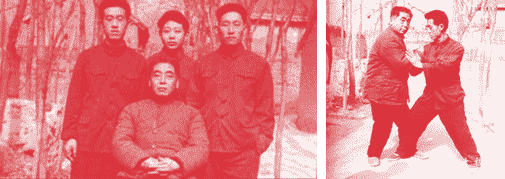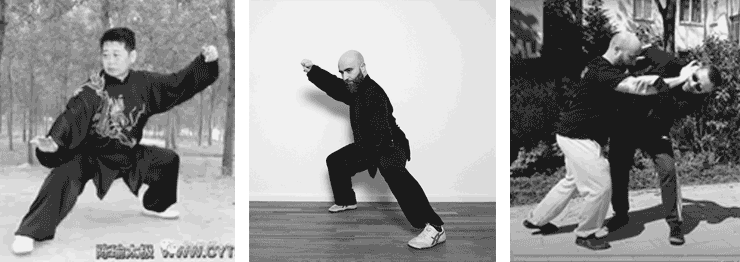[...] If you can apply yourself to the work over and over again, you will become smart, no matter how dumb you are, and you will become strong, no matter how weak you are. Confucius said [Mengzi, chapter 2a]: “I learn insatiably.” To train in this art likewise requires that quality of insatiable learning.
Chen Ziming, "The Inherited Chen Family Taiji Boxing Art", 1932
Translation Paul Brennan 2017
What is taiji?
Chen Family Gongfu is another way of saying "Chen-style taijiquan". The words "taiji / taichi / tai-chi"
often come with preconceived ideas and images which are best left aside at first.
Using the word "gongfu" lays emphasis on the learning process, based on diligence and leading to the acquisition of proper skills. Besides, our style is also called "taiji gongfu".
"Taiji" is the highest principle in Chinese philsophy, i.e. the interplay of yin and yang: ☯.
"Quan" means fist in Chinese and refer to martial/boxing arts in China.
Thus one could say that Taijiquan is the boxing art of yin and yang. Applied to the human body in many ways, a simple concept like yin/yang will lead to complexity.
Progressing through the art, gaining strength, insights and skills is a lifelong adventure with a clear progression blueprint and clear methods – walking the gongfu path means that you eventually need to work it out yourself: it's not just about imitating the teacher during class.
It is a rich practice with a long tradition. Passed on within one family for twenty generations, it contains – as you can imagine – a wealth of knowledge.
If you wish to learn more about how we train and what we do, you can head over there.
What is gongfu?
Thanks to internet, you can find tutorials about pretty much anything. In earlier times such records of everything were not available. You had to build skills on your own, or with the help of people around you who had learned them before. Craftsmen’s skills were often transmitted within the family and often over several generations. That’s how families could become specialised in, say, baking, carpentry, or forging. Such a set of skills, when acquired and mastered through many years of hard labour, is called gongfu in Chinese, a term best known with the alternative spelling kungfu which is in fact not originally specific to martial arts.

Taiji Gongfu
The set of skills displayed in the Chen family entails a similar craftsmanship. The population in rural villages had to defend against banditry while still being able to work on the fields. A discipline had to be devised in order to teach some self defense while training the body in a sustainable way. Taijiquan, along with other Chinese martial arts, slowly emerged by combining many things together: a Chinese Daoist alchemy fostering body-spirit cultivation, meditative practices, a centuries-old tradition in medicine and gymnastic exercises, as well as ancient warfare concepts and strategies. These different teachings are the ingredients of a system that has been built up, passed down, cared for and improved upon over many generations and has reached a very sophisticated level.
Chen Fake (1887-1957) is the one who first taught Chen-style taijiquan outside of the Chen village when he went to live in Beijing in 1928. There he soon gained a reputation and taught many students. He transmitted all his knowledge to his only son Chen Zhaokui (1928-1981) who trained hard to develop gongfu and went in many cities of China to teach and pass on his family's taijiquan skills during often very difficult times. Among his students were famous figures like Chen Xiaowang, Chen Zhenglei or Wang Xian. He taught his only son Chen Yu (1962) who very early on accompanied and assisted him on his trips to teach taiji. Nabil Ranné (1975) has been learning from him as his direct disciple since 2007, he then co-founded the Chen Taiji Network Deutschland (CTND). I have been learning from him since 2011.
Traditionally this lineage is not affiliated to "schools" like laojia (old form) or xinjia (new form). Instead we speak of gongfujia (gongfu form) - Chen Yu mentions that neither his father or grandfather spoke of different "jia", those different terms were not used before 1980. Learning the gongfujia means eventually putting a meaning and the appropriate force behind every tiny single movement, filling each posture with power at all times.

If you want to learn more about our training, head over here.